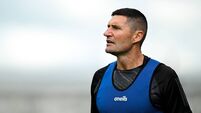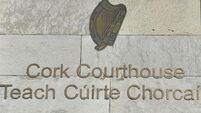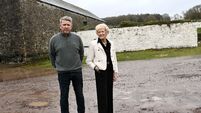ESRI study shows GAA enduring alarming player drain
The ESRI’s report on participation levels in sport and exercise, Keeping them in the Game, has discovered that the likelihood of an adult dropping out of Gaelic football, hurling or camogie between the ages of 18 and 22 is “greater than one-half”.
The only comparable casualty rate can be seen in basketball — where the fall-off is even greater — but the GAA clearly has reason to be alarmed, especially given the rates for soccer are less than half that. Figures for rugby are unavailable.
Possible reasons put forward for the disparity between soccer and GAA are the former’s high participation rates among those playing five-a-side games, whereas it seems the GAA’s greatest strength may well, in this case, be a weakness.
The parish ties that bind are inherent to the fabric of Gaelic games but it seems the draw of the home club may be part of the problem in maintaining the interest among those members who move beyond its magnetic pull.
Such a theory would be consistent with the report’s findings which suggest that activity levels among adults is less related to attitudes and beliefs than to significant life events.
“Most adults,” it claimed, “believe sporting activity is good for them and want to be more active, but leaving education, work commitments, relocations and family responsibilities lead many to drop out.”
The report amounted to the largest ever undertaken on participation levels in Ireland with responses sought from an age range starting with primary school children right up to older adults.
The findings were, in general, positive.
Anything up to 95% of 11-year-olds are engaged in regular sporting activity and, though the numbers drop progressively as people age, the fact is that the percentages across the demographics have never been better.
Among other interesting findings were those that pointed to cycling and swimming as those sports which were most likely to lead to lifelong activity and how teenagers who played sports achieved better Leaving Certificate results.
“A lot of kids are playing sport and we need to keep them in that,” said John Treacy, chief executive of the Irish Sports Council. “There are some critical issues [raised] but they are not unique to Ireland or Europe. They are common worldwide.
“These are kids dropping out in secondary school, kids going from secondary to college or work and then dropping out. The numbers are coming back into the sport and people are getting the message around the importance of sport and activity.”
The research could, if heeded, have significant implications for how sport is funded. Among the conclusions reached was one finding that a lack of facilities is no barrier to people who wish to participate in sporting activities.
Among the recommendations is that suggesting that “what limited funding is available ought to be directed at programmes more likely to increase participation”, which is effectively an argument for current over capital funding.
The Government saw matters differently earlier this year when it cut current funding by 8% (though that was later reduced to a 3% haircut) while significant funds were earmarked for projects under the Sports Capital Programme.
It will be interesting to see, then, how such suggestions fit into Government policy plans next year, with Minister of State for Transport and Tourism, Michael Ring, contemplating a so-called masterplan for sport.
“The Sports Capital Programme has been hugely helpful over the last 10 or 15 years,” said Treacy, “because back then those facilities weren’t there and that was coming back to us a lot in this type of research: a lack of facilities, terrible facilities.
“The Capital Programme hasn’t been funded the last number of years. You need your capital and you need your current funding as well. You need the people and the programmes to run sport in the country and hopefully that will continue to happen.”












